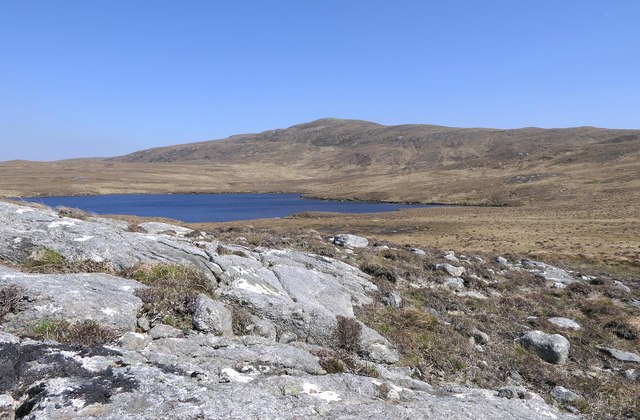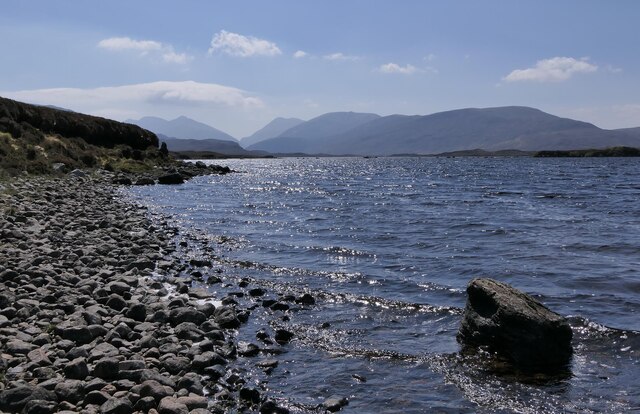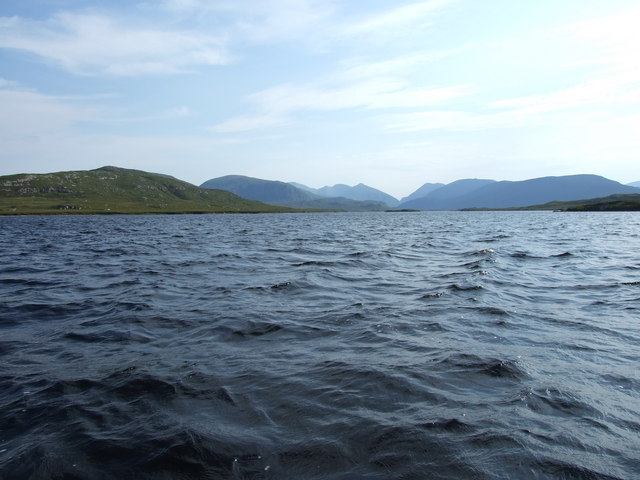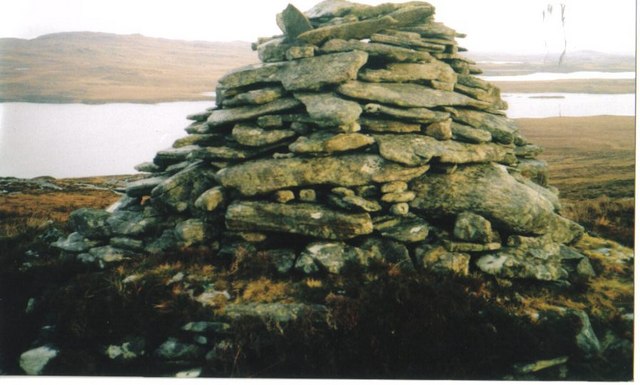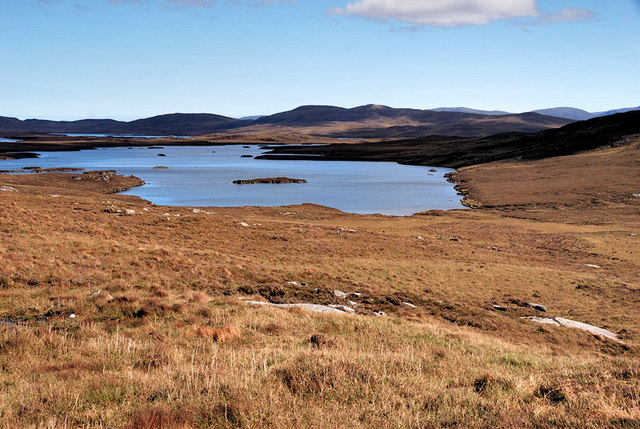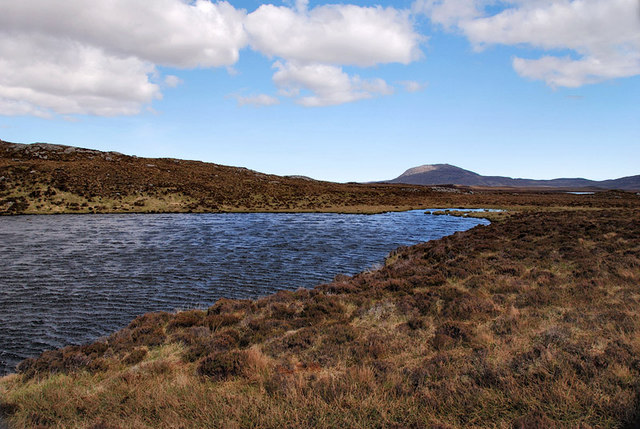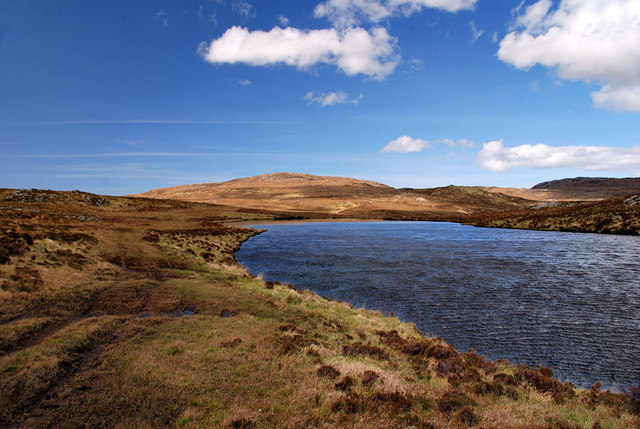Cnoc Beag na h-Uidhe
Hill, Mountain in Ross-shire
Scotland
Cnoc Beag na h-Uidhe
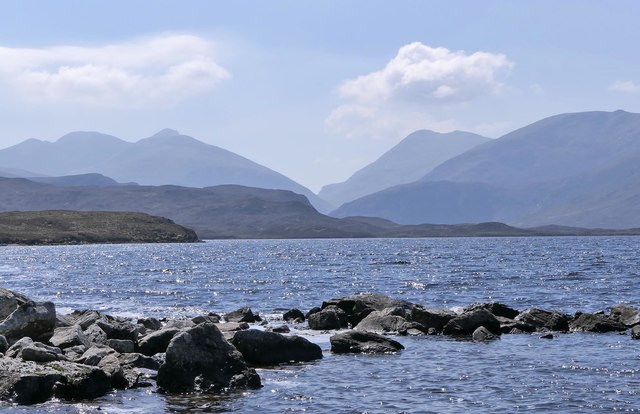
Cnoc Beag na h-Uidhe is a prominent hill located in Ross-shire, Scotland. It is situated in the Northwest Highlands, approximately 5 miles northeast of the town of Ullapool. With an elevation of 561 meters (1,841 feet), it is considered a significant landmark in the area.
The hill is characterized by its rugged and rocky terrain, typical of the Scottish Highlands. It is composed mainly of Torridonian sandstone, which gives it a distinct reddish-brown color. Cnoc Beag na h-Uidhe is part of a larger mountain range known as the Beinn Dearg group, which includes several other notable peaks.
The ascent to the summit of Cnoc Beag na h-Uidhe can be challenging, as it involves steep slopes and rough terrain. However, the effort is rewarded with breathtaking panoramic views of the surrounding landscape. On a clear day, visitors can see the vast expanse of Loch Broom to the west, as well as the peaks of the nearby mountains such as Beinn Dearg and Cona' Mheall.
The hill is a popular destination for hikers and mountaineers, attracting outdoor enthusiasts from both the local area and beyond. It offers a range of routes and trails suitable for different skill levels, providing opportunities for both leisurely walks and more adventurous climbs.
Cnoc Beag na h-Uidhe is not only a natural attraction but also holds historical and cultural significance. It stands as a testament to the rich heritage of the Scottish Highlands, providing a glimpse into the region's geological past and offering a connection to the land's ancient roots.
If you have any feedback on the listing, please let us know in the comments section below.
Cnoc Beag na h-Uidhe Images
Images are sourced within 2km of 58.082187/-6.7821735 or Grid Reference NB1820. Thanks to Geograph Open Source API. All images are credited.
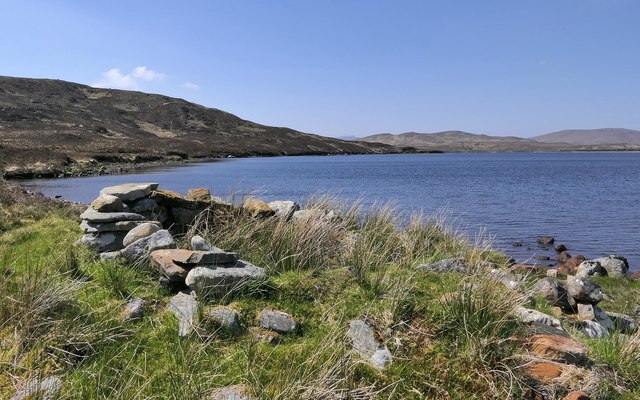
Cnoc Beag na h-Uidhe is located at Grid Ref: NB1820 (Lat: 58.082187, Lng: -6.7821735)
Unitary Authority: Na h-Eileanan an Iar
Police Authority: Highlands and Islands
What 3 Words
///skinning.skate.hero. Near Leurbost, Na h-Eileanan Siar
Nearby Locations
Related Wikis
Eilean Mòr, Loch Langavat
Eilean Mòr is an island in Loch Langavat on the Isle of Lewis in the Outer Hebrides of Scotland. == Footnotes ==
Airidh a' Bhruaich
Airidh a' Bhruaich (Arivruaich - anglicised) is a scattered crofting township in the South Lochs district of the Isle of Lewis in the Outer Hebrides of...
Gisla Hydro-Electric Scheme
Gisla Hydro-Electric Scheme was a small scheme promoted by the North of Scotland Hydro-Electric Board on the Isle of Lewis, Outer Hebrides, Scotland. It...
Seaforth Island
There is also a Seaforth Island in the Whitsunday Islands of Queensland, AustraliaSeaforth Island (Scottish Gaelic: Eilean Shìphoirt/Shìophoirt or Mulag...
Ardvourlie Castle
Ardvourlie Castle is a 19th-century country house on Harris, one of the Western Isles off the north-west coast of Scotland. The house was built beside...
Nearby Amenities
Located within 500m of 58.082187,-6.7821735Have you been to Cnoc Beag na h-Uidhe?
Leave your review of Cnoc Beag na h-Uidhe below (or comments, questions and feedback).
